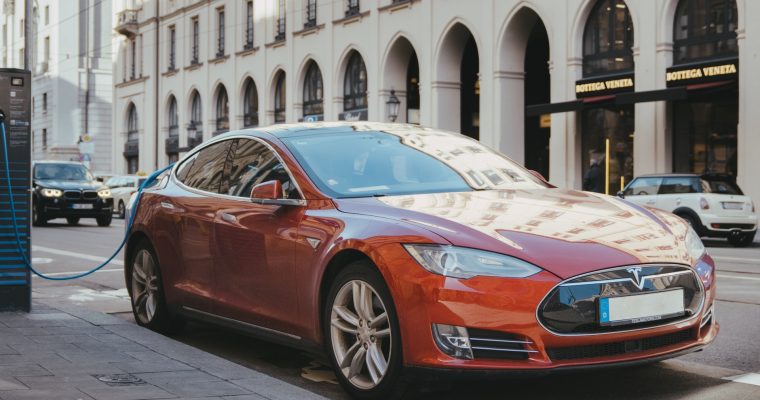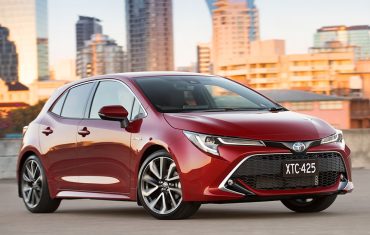
Why you need to consider a new electric car now!
For driversBy Andrew Maclean
The transition to electric cars in Australia looks like it will be fast tracked under the newly elected Labor government.
Within the first three months of government, the Australian Labor Party has implemented a number of key decisions and tabled numerous financial incentives for parliament to accelerate the take-up of EVs under its climate action policy.
The incentives include abolishing any import tariffs on zero emission cars, such as full battery-electric and hydrogen fuel cell vehicles, as well as eliminating fringe benefits tax for new EVs with a retail price lower than the current Luxury Car Tax threshold, while also encouraging a wider roll out of charging infrastructure through co-investment with the private sector.
These come on top of the variety of packages already established by individual state governments, each of which are aimed at reducing any hurdles to electric vehicle ownership by making them more accessible.
More than that, the government has also outlined plans to introduce a fuel efficiency standard for all Australian vehicles that will help lower carbon output to help reach its target of a 43 per cent emission reduction by 2030 and net zero by 2050.
Any, or all, of these factors will have an impact on the choice of your next new vehicle and may offer additional benefits to business fleets, and especially to novated lease holders.
So, we asked some key navigators across the EV landscape what the post-election state of the nation is for electric cars and why you need to start planning for the future now.
Beyhad Jafari is the Chief Executive Officer of the Electric Vehicle Council, which works with government, car makers and industry to accelerate the popularity and viability of electric vehicles in Australia.
After years of electric cars being dismissed by the previous coalition government, which at one point claimed they would “end the weekend”, Jafari is encouraged by the speed and actions taken by the Albanese-led parliament.
“It’s definitely a very positive sign that the Electric Car Discount bill was one of the first bills that this government introduced in Parliament,” Jafari told SG Fleet.
“And being one of the first big announcements that they’ve made is reflective of a government that’s taking this issue very seriously and sees [EVs] as a massive opportunity for Australia.
“They’re in government for at least the next three to four years, and they’re doing it all in the first half of the first year, so that shows how seriously the government recognises the important role electric vehicles will play in meeting its emissions reduction target.”
Jafari says that, in certain circumstances, the financial incentives available now already make owning an electric car more affordable than a comparable vehicle with an internal combustion engine.
But not necessarily for all Australians, as some of the state-based initiatives offer more than others.
“I think certainly, around the various states now, we have anywhere between $3000 to $5500 worth of financial incentives, and pretty significant contributions towards building out charging infrastructure. These things are all great,” he said.
“But some uniformity across the country would be a nice thing, particularly for consumers as it can be quite confusing.”
Perhaps the most significant incentive – particularly for business fleets and novated lease holders – is the proposed elimination of fringe benefits tax on EVs that cost less than the Luxury Car Tax threshold for low emission vehicles of $84,916.
This, according to Lincoln De Kalb, the head of Future Mobility Product Development for SG Fleet, has the potential to slash the operating costs of an electric vehicle to be less than a conventional vehicle if the bill is passed by parliament.
“Our modelling shows that in some cases EVs are coming in cheaper than a traditional ICE vehicle, which is amazing,” De Kalb said.
“And if the ATO issues some additional guidance around home electricity reimbursement rates, then that could make the updated offering far more attractive.”
The only drawback – apart from the fact that it has yet to be officially introduced – is the government will review the policy in three years, which makes long term planning difficult for lease holders and business fleet operators.
“This is a bit of a sticking point that we hope will be clarified when the bill is passed,” said De Kalb.
“If the FBT exemption changes midway through a lease period, it could result with some people in financial hardship because of unexpected additional costs.
“We would like to know that if you take out a five-year lease that the FBT exemption stays for those five years… happy days.
“Similarly, if somebody takes out a lease on an EV two days before the legislation’s due to be reviewed, does that then lock them in for FBT savings for three to five years or is it going to be knocked on the head?
“There’s a real point of ambiguity that needs to be clarified through the Senate Select Committee.
“Even still, it is a very promising sign from the government, and one that could be hugely beneficial to fleet operators.”
De Kalb also highlighted that the government policy currently requires the FBT to remain part of employee’s reportable taxation calculations, which can have a subsequent effect on any personal outcomes that are means tested, such as child or carer’s support payments.
“I’m hoping they water that down or actually get rid of it, so it’s no longer reportable FBT” said De Kalb.
“But like I say, we need to wait until legislation lands first to get a better understanding of the policy and then we can start clearly communicating to customers to allow them to properly plan for the future.”
That isn’t a simple task, at the moment anyway. Significant supply constraints have created considerable wait lists for most new vehicles, stretching out to beyond 12 months for some popular models like the Toyota RAV4 Hybrid.
That situation is amplified with electric cars as car makers scramble to meet demand in larger markets such as North America, Europe and China and can only allocate small portions for local sale.
In Australia, electric vehicle sales have grown year-on-year, with a record 20,500 new EVs registered in 2021. But that is still only around two percent of the total market.
Jafari estimates, using anecdotal data, that there is already enough demand locally to sell 100,000 new EVs per annum, and the proposed fuel efficiency standard will provide car makers with clear guidelines and sales targets that will improve the availability of EVs in Australia.
“Australia is more significantly supply-constrained as a result of our policies and regulations, and how they don’t match up with the rest of the world,” he said.
“Yes, there is a global supply constraint, but it is a global supply constraint that lets other markets get hundreds of thousands of products and lets us get tens of thousands.
“The proposed fuel efficiency standard will also ensure customers have a wider range of electric vehicles that cover more segments and are more affordable.
“But it’s not just about EVs. We will get more fuel-efficient vehicles with the latest in technology across the board. And that’s a good thing.”
The supply issue means customers – including business fleet operators – need to look further ahead to ensure a seamless transition between lease periods, says De Kalb.
“Whereas before we used to have the conversation that your vehicle lease is ending lease in six months or eight months, now we’re saying, ‘let’s start planning now’ when the vehicle is coming up for end of lease in 18 months’ time,” he said.
“The horizon has been extended further and further because of the supply constraints, but we are here to help provide our customers with a clearer view and navigate them to make the best choice for their business.”
For expert support and guidance as you transition to electric mobility, contact SG Fleet today.
 Driving Insights
Driving Insights



